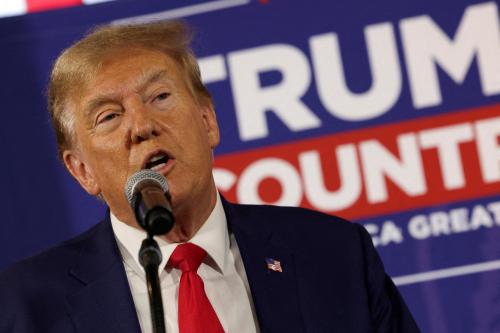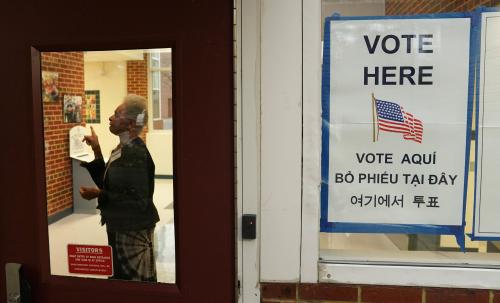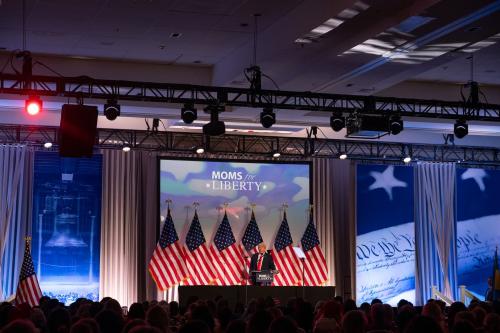Heath Brown is the author of the upcoming book, “Roadblocked: Joe Biden’s Rocky Transition to the Presidency” (University Press of Kansas, 2024), of which this blog references quotes.
One person involved in the 2020 transition said: “You more or less only have three months to build a plane, fly a plane, land a plane…that plane, being the massive apparatus that is the federal government.” In just 78 days, over 1,000 people did just this, preparing for the transfer of power to Joe Biden and Kamala Harris, nearly all working from home during one of the deadliest periods of the COVID-19 pandemic. For a forthcoming book, “Roadblocked: Joe Biden’s Rocky Transition to the Presidency” (University Press of Kansas, 2024), I interviewed over 75 transition team members to learn what it was like on the inside. I also interviewed several dozen outside experts who helped the team make the difficult decisions on hundreds of personnel choices, prepare an initial budget, as well as finalize a policy agenda.
What I learned reveals much about the resilience of our institutions. I ended the book reassured that careful planning and perseverance ultimately won the day. Despite the wreckage of January 6, the inauguration went off without a hitch and the new administration took power in the way voters had intended. The worst days of the pandemic subsided, and the economy soon recovered, both attributable to the effectiveness of transition planning.
Nevertheless, my findings also raise critical concerns for future transitions, including the potential for another one in under a year. The failure of key figures in the outgoing administration to coordinate with the incoming team raised incredible risks for the safety of the country. To avoid repeating that again in the future, it’s the right time to learn some lessons from 2020.
Finding expertise
To start, it’s nearly a cliche that information is the most prized resource in Washington; information is even more important during a presidential transition, since the incoming administration must understand the details of tens of thousands of aspects of federal affairs, and do so quickly.
As the transition began, information was exactly what the Biden-Harris team couldn’t get. Recall, immediately after the election, there was a period of three weeks when the General Services Administration (GSA) wouldn’t ascertain the results of the election. This meant $6 million in federal support wasn’t initially available and the Biden-Harris team was forbidden from contacting anyone currently serving in government.
Though this greatly limited the information they could collect, many believed this opened an unexpected opportunity. Instead of contacting current officials, the team looked elsewhere. One person said the outgoing administration “sort of handed us something unintentionally that proved to be very valuable and very unique, which was because they didn’t ascertain us for so long, we were forced to talk to people outside the government.” Another explained, “people who have left [the government] are a lot more forthcoming, so that was actually a very good information source…I don’t think I would have worked as hard to get those people if I’d had access to people who were still in government.” Future transition teams should remember this lesson that high-quality information can be found inside and outside the government.
By the end of November, the GSA had ascertained the election, and the official transition began. Most revealing about this period after ascertainment were the interactions between the Biden-Harris team and those who they’d been forbidden to talk to just days earlier. The people I interviewed regularly praised careerists for their openness. One person said the career staff “were generally pretty collegial,” while another said “the under-secretaries and other people were very forthcoming, they arranged meetings…They were very constructive and they were very professional.”
This contradicts an impression left from 2020 that the Biden-Harris team confronted only obstruction; this wasn’t the case. What did seem the case, however, was that in some of the most pressing areas, outgoing political appointees were anything other than collegial, barely cooperating in key areas like intelligence and the budget. Indeed, our interviews confirm reporting that many political officials at Defense and OMB didn’t cooperate in 2020.
One member of the team said “it was so clear just how much they were hiding in every answer.” Another person concluded: “We did a lot of dialogue with the [budget] staff. It’s not like no transitioning happened…but a lot of the serious work that we would have been doing, like working together on the budget…we just couldn’t do.”
The importance of cybersecurity
This transition obstacle would be less worrisome if the Biden-Harris team didn’t face so many other obstacles as well. Some of those are well-known, such as the global health emergency; others were more mundane, such as having a secure working environment for the thousand-plus members of the team, which was a major challenge. Many participants involved recalled the email hack in 2016 that exposed the Clinton campaign in the waning days of that election. “Podesta’s emails…we were haunted by them,” summed up one leader of the Biden-Harris transition.
In response, the transition mailed Chromebooks along with a security key. Two-factor authentication was required for transition personnel and the team insisted that everyone use the secure messaging app, Signal. All work was to be done on a newly-created Google workspace. “I remember them telling us early on we’re using the Google platform because it’s never been hacked,” one volunteer remarked.
And they were right to be extremely careful on cybersecurity as the team didn’t face a serious security breach. This lesson about cybersecurity could be reflected in the resources the GSA provides to candidates in the future. The GSA should consider developing a standardized suite of secure devices and platforms, so that transition teams aren’t forced to scramble to assemble this on their own.
The risks of siloing
There are consequences of a strict adherence to strong cybersecurity practices. One person explained that “The transition folks were under just such strict guidance, it was something that characterized the campaign to the level of attention to cyber security to information protection,” but they concluded “also really constraining.” Many people described a siloed work environment, hierarchies, and limits on collaboration within the team. One person said that there was “very limited collaboration across departments…or if you wanted to make that collaboration, you had to work exceedingly hard.”
As much as better cooperation with the outgoing administration, future transition teams need to think deeply about internal communication and coordination. This is difficult in the sprint to the inauguration, but the complex and interconnected issues transition teams confront demand a truly collaborative approach based on safe and effective teamwork.
The lesson for 2025 is plan ahead
Whether we face a second-term transition for President Biden or a full 2025 transition to a Republican administration, the complexity of our national problems as well as ongoing international challenges require a commitment to cooperation from all candidates and all parts of the government. The lessons from 2020 show just how important this is and why we need to be preparing more than a year in advance.
Some of this has already begun. Congress mandates that the GSA begin the pre-election transition work a full 12 months before the election, and the GSA has already fulfilled this requirement. It’s good news that the current administration, even though it is seeking re-election, understands the central premise of our democracy to accept the consequences of potentially losing the election.
Nevertheless, more could be done.
Despite the enormity of the transition, the current federal allotment to fund post-election transition work remains too low. Past transition teams have had to raise millions of private dollars and still most serving on the transition are unpaid volunteers. Congress should consider increasing federal support to reduce the need for private financing and permit more volunteers to be paid for this important work, especially in high demand areas like cybersecurity.
Finally, pre-election transition planning remains too secretive. Many candidates are too superstitious about openly preparing to win, fearing accusations of presumptuousness. This tradition has unnecessarily limited transition planning and closed opportunities for a wider array of experts and groups to provide advice and assistance. A more open and transparent process would not only be more effective, it would also be fairer and more democratic.






Commentary
Lessons from the 2020 presidential transition
December 14, 2023